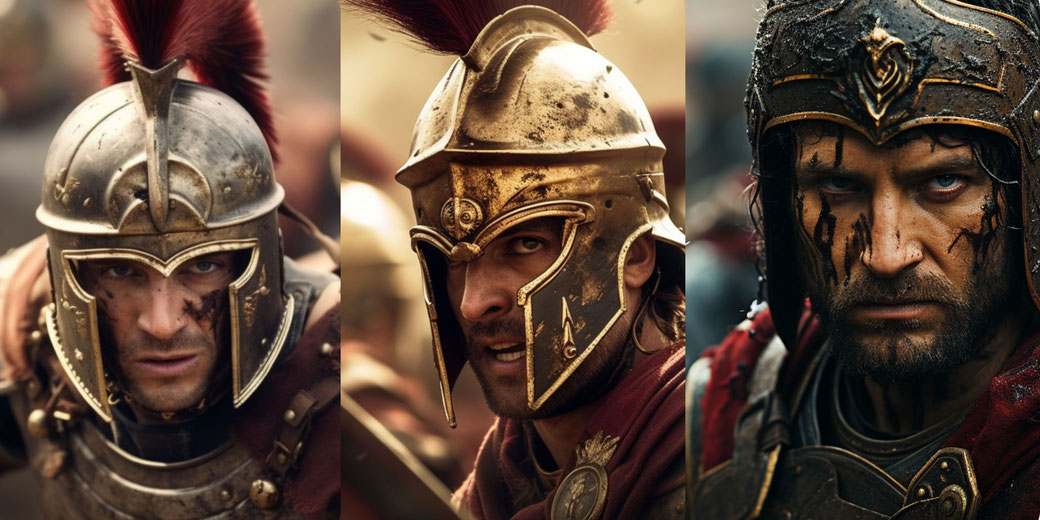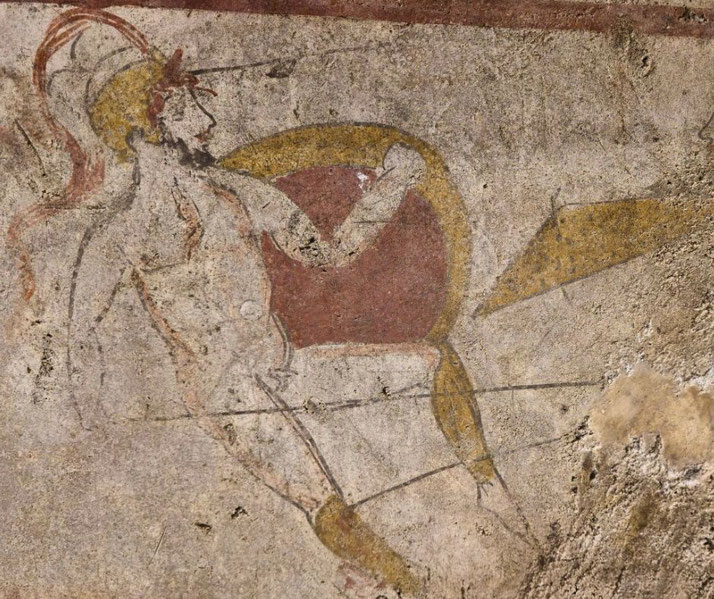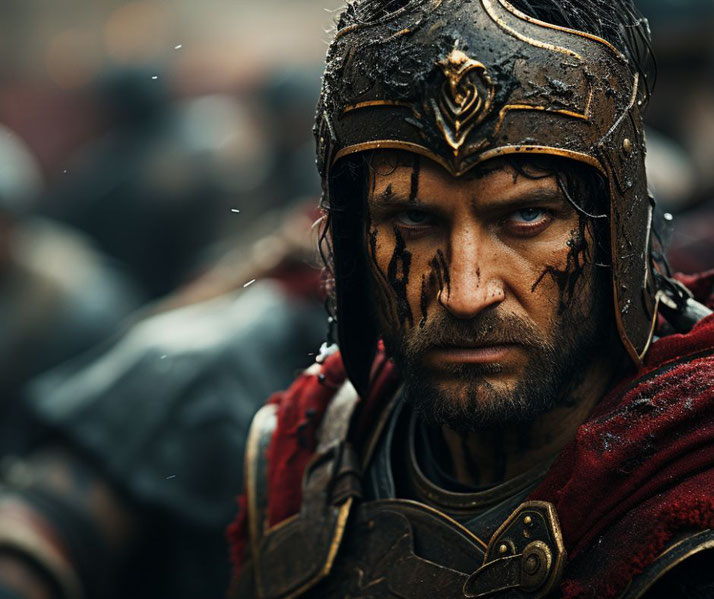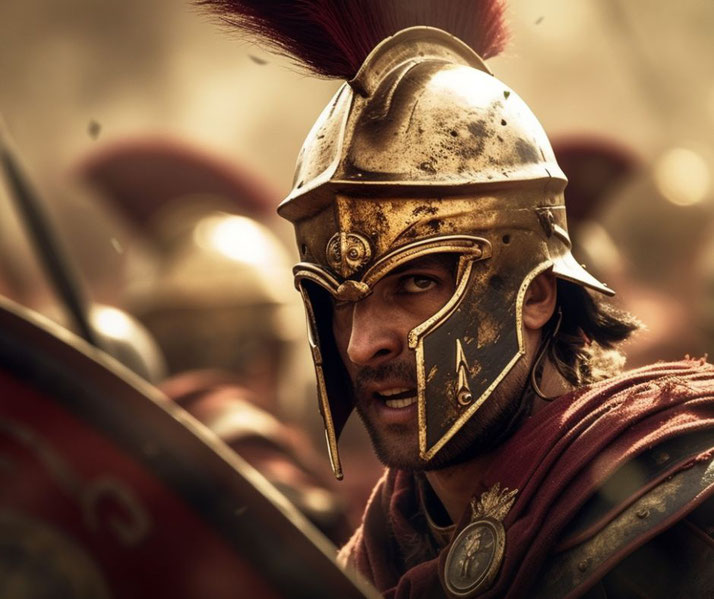Roman legionary, Macedonian phalanx, or Spartan hoplite: Which was the better ancient warrior?

The image of a fully armed Roman Legionary, a phalanx of Macedonian pikemen, or a Spartan Hoplite clad in bronze are ingrained in our collective consciousness as symbols of power, discipline, and military prowess.
Yet, when one begins to peel away the layers of myth and legend, a question arises: Among these three paragons of ancient warfare, who would prevail in a one-on-one contest?
The aim of this exploration is not to indulge in idle fantasy, but to delve into the heart of their respective military traditions, training methods, and equipment.
The Roman Legionary, the Macedonian Phalanx, and the Spartan Hoplite each epitomize the martial ethos of their civilizations.
Rome, known for its discipline and innovative tactics; Macedonia, for its use of the sarissa and the revolutionary phalanx formation; and Sparta, with its culture that prized military prowess above all.
This comparison does not simply boil down to who wielded the sharpest sword or the longest spear. Rather, it is a window into the cultures that produced these warriors, the tactical doctrines they adhered to, and the historical impact they left in their wake.
The three contenders introduced
The heart of the Roman Empire's vast military machine was its Legionary, a professional soldier enlisted from among Rome's citizenry.
Originating from the early days of the Roman Republic, the Legionary evolved over centuries, adapting to the changing demands of warfare and the rise and fall of empires.
In the classic era of the Roman Empire, a Legionary was often a career soldier, spending twenty-five years in service, honing his skills in numerous battles.
Training for a Roman Legionary was rigorous, focusing on physical conditioning, weapon handling, and formation drills.
The soldiers trained with wooden swords and wicker shields, both deliberately made heavier than their real counterparts to build strength and endurance.
Each Legionary was equipped with a short sword known as a gladius, a pilum (javelin), a large rectangular shield called a scutum, body armor often in the form of segmented plate armor (lorica segmentata), and a distinctive helmet.
The Macedonian Phalanx emerged under the reign of Philip II of Macedonia, father of Alexander the Great.
The phalanx formation represented a significant evolution from the hoplite warfare commonly employed by other Greek states, offering greater flexibility and offensive potential.
The Phalangites, as the soldiers in the phalanx were known, were the backbone of the armies that helped Alexander create one of the largest empires in history.
Training for the Phalangites was a mix of physical conditioning and formation drills, with an emphasis on maintaining the integrity of their dense formation, even on rough and broken ground.
Their primary weapon was the sarissa, a long pike that could reach over the shields of the front ranks and strike at the enemy.
The Phalangite was also equipped with a small shield, a short sword for close combat, and simple but effective armor comprising a helmet, a linen cuirass, and greaves.
In ancient Sparta, a city-state in Greece known for its military-oriented society, the Hoplite was not just a soldier, but a citizen.
The term "Hoplite" refers to the hoplon, the large round shield carried by these infantrymen.
In the strict social hierarchy of Sparta, male citizens were expected to undergo the agoge, a rigorous education and training program that prepared them for both citizenship and warfare.
Training in the agoge began at a young age and was as much about instilling discipline, endurance, and a sense of unity as it was about learning to fight.
Spartan Hoplites were renowned for their discipline and their ability to maintain a phalanx formation in the heat of battle.
The primary weapons of a Spartan Hoplite were the dory, a long spear, and a short sword known as a xiphos.
Their armor was comprehensive, consisting of a bronze cuirass, a Corinthian helmet, greaves, and the aforementioned hoplon, which provided substantial defensive coverage.

What are their strengths and weaknesses?
Strengths of the Roman Legionary lay in their superior discipline, versatile equipment, and the flexible tactical system that allowed them to adapt to various battle situations.
The Legionaries' primary weapon, the gladius, was superb for close-quarter combat, while the pilum, a heavy javelin, could disrupt enemy formations at a distance.
Their large scutum provided significant protection, and their segmented armor offered a good balance between defense and mobility.
The Roman manipular and later cohort tactics provided flexibility on the battlefield, allowing them to react to different enemy formations and tactics.
The cohort, a standalone unit of about 480 men, could operate independently if necessary, adding to the legion's adaptability.
However, Roman Legionaries also had their weaknesses. Their equipment was heavy, which could lead to fatigue over the course of a prolonged battle.
Furthermore, their strength lay in their cohesion and formation - isolated or surrounded Legionaries could be vulnerable.
Finally, while their training was extensive, it was not as lifelong and all-encompassing as the Spartan system.
The strength of the Macedonian Phalanx was in its offensive power and its ability to keep enemies at bay with the sarissa, a pike much longer than any conventional spear.
This weapon gave the Phalangites an advantage against most enemy infantry, as they could strike without being within the enemy's reach.
When a Phalanx maintained its formation, it was a formidable defensive and offensive force, like a forest of spears that could advance and sweep away opposition.
However, the Phalanx's strength was also its weakness. The formation was rigid and difficult to maneuver quickly, especially on uneven terrain.
The reliance on the sarissa left Phalangites vulnerable in close combat, where the long pike was less effective.
The Phalangites were also vulnerable on their flanks and rear, where their pikes offered little defense.
The Spartan Hoplite was the product of a society utterly devoted to the art of war. From childhood, Spartans were molded into warriors, and their entire way of life centered around discipline, endurance, and martial prowess.
Spartan Hoplites were renowned for their ability to maintain formation under pressure and their refusal to retreat or surrender.
Spartan Hoplites were armored head to toe, offering substantial protection in battle.
Their primary weapon, the dory, was a long spear ideal for use in the phalanx formation, while their xiphos provided a lethal option for close combat.
However, the Spartan's focus on the phalanx warfare could also be a weakness. Like the Macedonians, they were vulnerable to attacks on their flanks and rear and found maneuvering difficult on uneven terrain.
Spartans were also fewer in number due to their citizen-warrior societal structure, which could prove disadvantageous in large-scale engagements.

How would each of them fare in one-on-one combat?
While it's crucial to remember that these warriors were trained for battlefield warfare, not one-on-one combat, we can explore how each might fare in single combat based on their training, tactics, and equipment.
In a hypothetical contest between a Roman Legionary, a Macedonian Phalangite, and a Spartan Hoplite, the Legionary's adaptability could give him an edge.
With a shorter sword designed for stabbing in close quarters, a protective shield, and durable, flexible armor, the Legionary is well-suited for one-on-one combat.
Additionally, a Legionary's training emphasized individual combat skills, meaning he could effectively engage enemies in single combat.
The Macedonian Phalangite's primary weapon, the sarissa, was designed for formation fighting, not single combat.
In a one-on-one scenario, the long pike would likely be cumbersome and less effective, and the Phalangite's smaller shield and lighter armor could put him at a disadvantage.
However, if he could maintain distance from his adversary, the sarissa could prove lethal.
The Spartan Hoplite, raised from youth for combat, would be a formidable opponent.
Their spear, longer than the Roman gladius but shorter than the Macedonian sarissa, could be effective at a certain range, and their round shield offered good protection.
Their intense physical conditioning and mental discipline would also be advantageous in single combat.

What about in a battlefield scenario?
The strength of the Roman Legionary was fully realized when they operated as part of a larger tactical framework. Roman tactics were incredibly advanced for their time, allowing for a flexible response to different enemies and battle conditions.
Legionaries could operate in a manipular formation during the early and mid-Republic, providing flexibility and mobility on the battlefield, and later in the more rigid but stronger cohort formations during the late Republic and Empire periods.
Tactics like the testudo, or tortoise formation, where soldiers would align their shields to form a sort of armored box, were incredibly effective in specific situations, such as sieges or against missile fire.
The Macedonian Phalanx's battlefield tactics were centered around the principle of shock and awe.
The phalanx would align itself into a solid block, sometimes sixteen men deep, with the soldiers' sarissas extending from the front line to create a lethal wall of pikes.
This formation was both defensively impregnable and offensively devastating, as long as it could maintain its cohesion.
However, it required level ground to be fully effective and was vulnerable on rough or broken terrain.
Combined with cavalry and lighter infantry, it formed an integral part of the combined-arms tactics that Alexander the Great used to great effect.
Spartan Hoplites were masters of the phalanx formation, a dense line of soldiers with overlapping shields and projecting spears.
This formation was designed to present an unbreakable front to the enemy and was particularly effective in narrow passes or other areas where the enemy could not outflank them.
While less flexible than the Roman formations, the Spartan phalanx was highly effective when used correctly.
Spartans also made use of deceptive tactics, such as feigned retreats, and their high morale and discipline often allowed them to withstand or counter enemy attacks that would break less steadfast formations.

So, who was the best fighter?
The ancient warriors – the Roman Legionary, the Macedonian Phalangite, and the Spartan Hoplite – each exemplify unique military traditions, methodologies, and societal systems.
From Rome's disciplined and adaptive legions to Macedonia's shock-and-awe phalanxes and Sparta's disciplined hoplites, these warriors played significant roles in shaping the historical trajectories of their respective civilizations.
Each warrior type excelled in their specific context, deploying tactics, equipment, and a degree of training best suited to their environment, the enemies they faced, and the societies from which they emerged.
In terms of individual prowess, circumstances, and individual skills would undoubtedly play significant roles.
However, these warriors were not mere individuals but components of larger military systems that harnessed their collective strength to overcome foes.
Ultimately, assessing who is "the best" ancient warrior may be less meaningful than appreciating the distinct, formidable strengths each brought to the battlefield.
The stories of the Roman Legionary, Macedonian Phalangite, and Spartan Hoplite offer rich insights into the complexities of ancient warfare, reflecting the broader political, social, and cultural fabrics of their times.
What do you need help with?
Download ready-to-use digital learning resources
Copyright © History Skills 2014-2025.
Contact via email
With the exception of links to external sites, some historical sources and extracts from specific publications, all content on this website is copyrighted by History Skills. This content may not be copied, republished or redistributed without written permission from the website creator. Please use the Contact page to obtain relevant permission.





